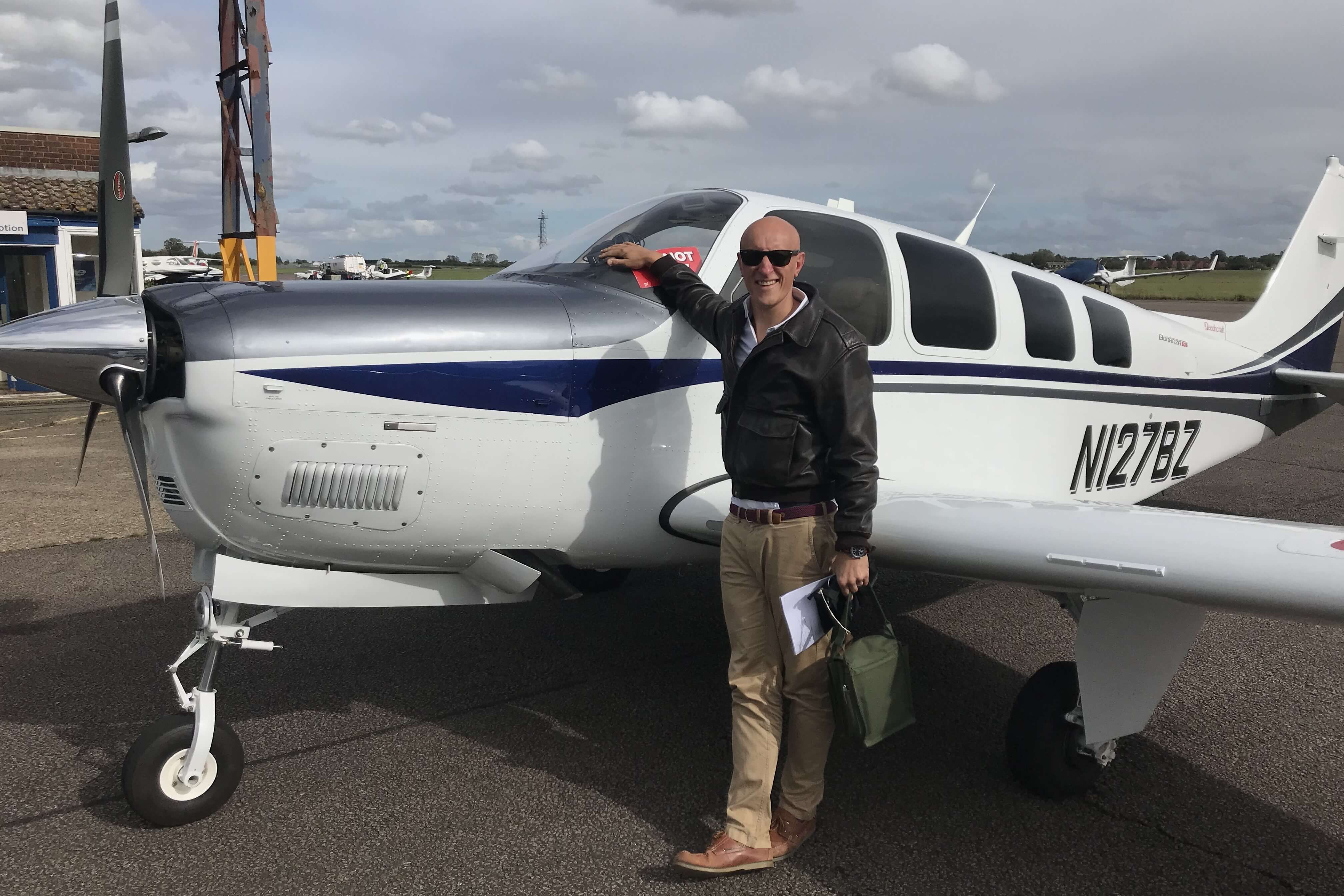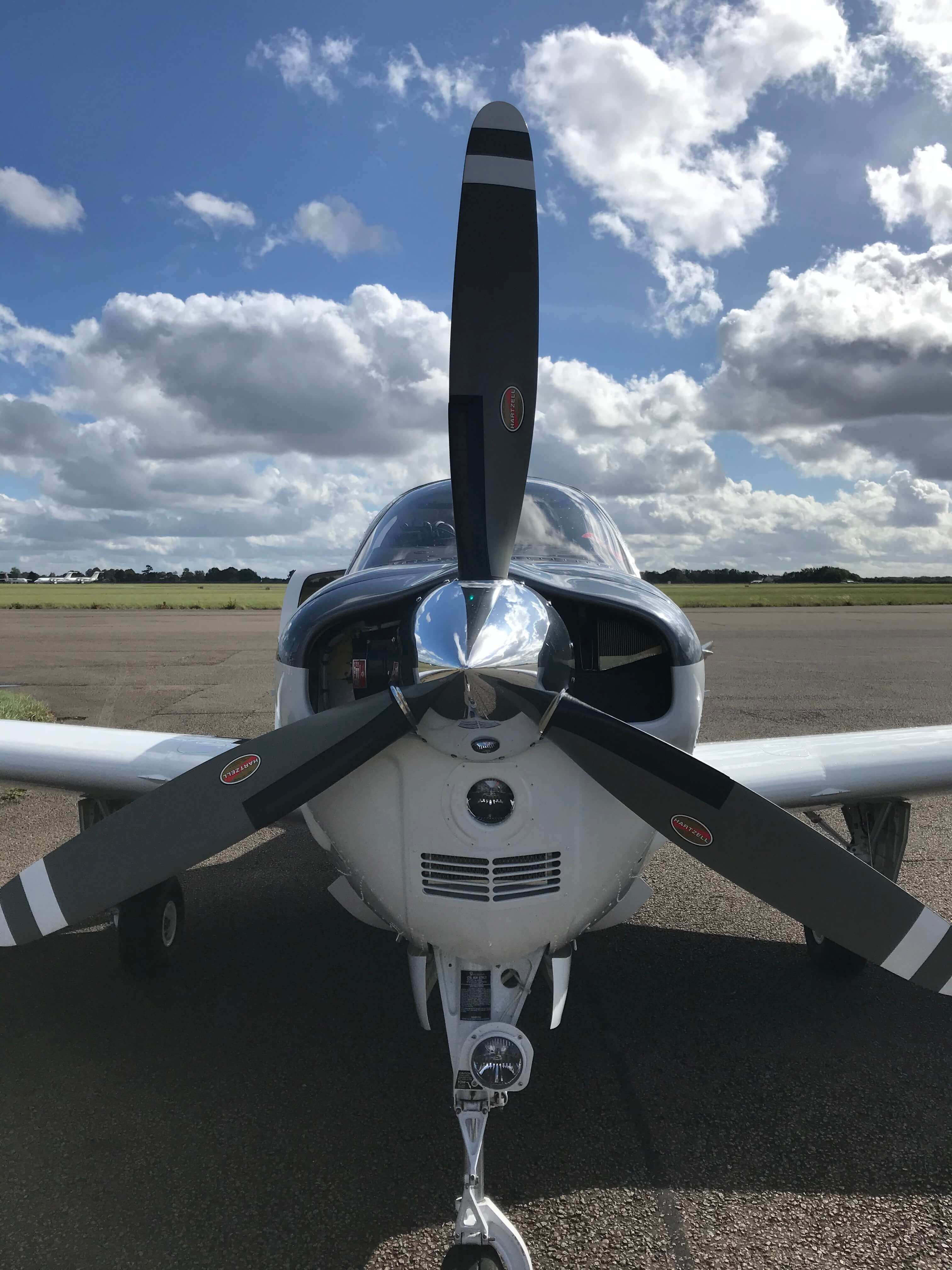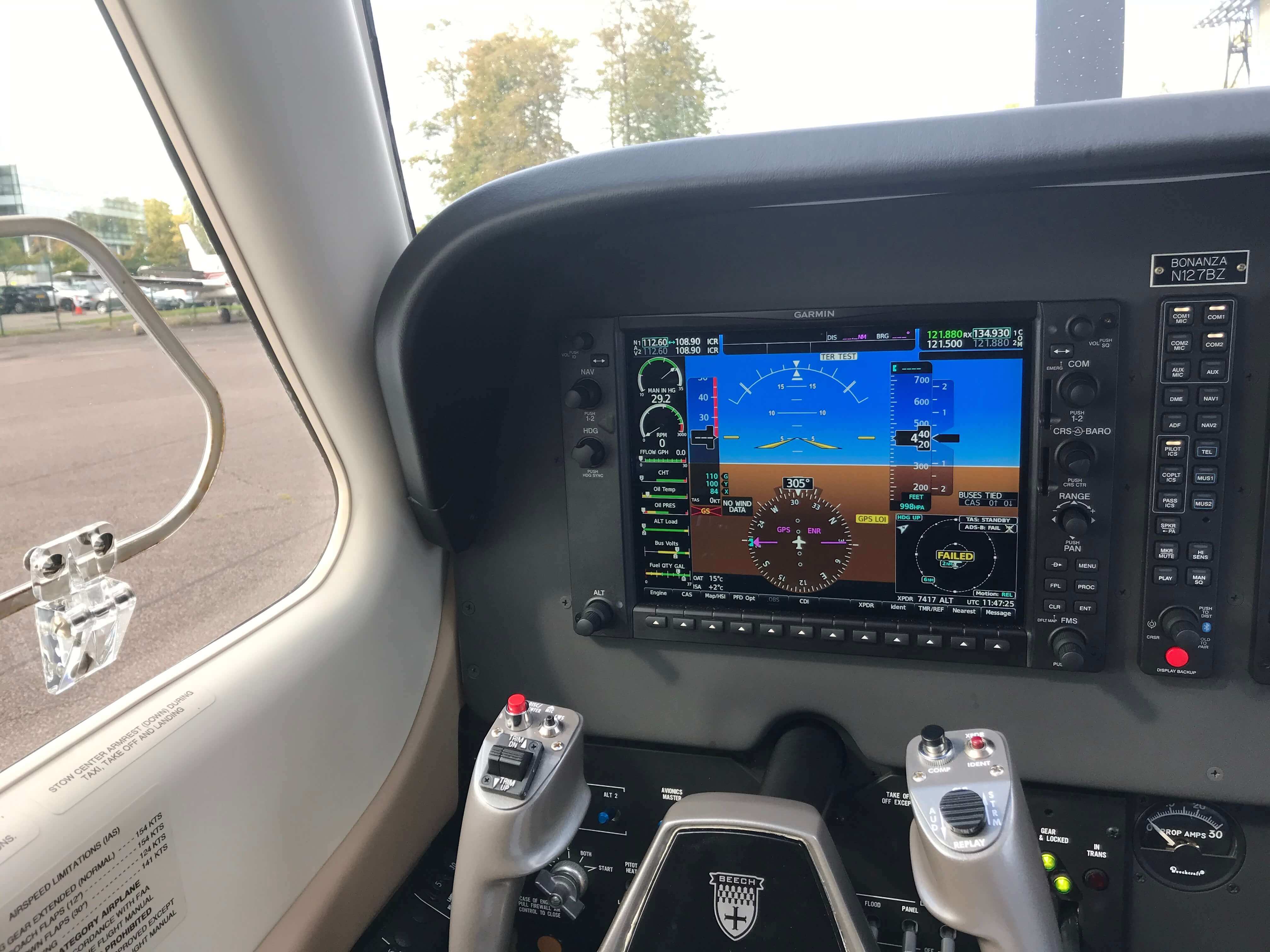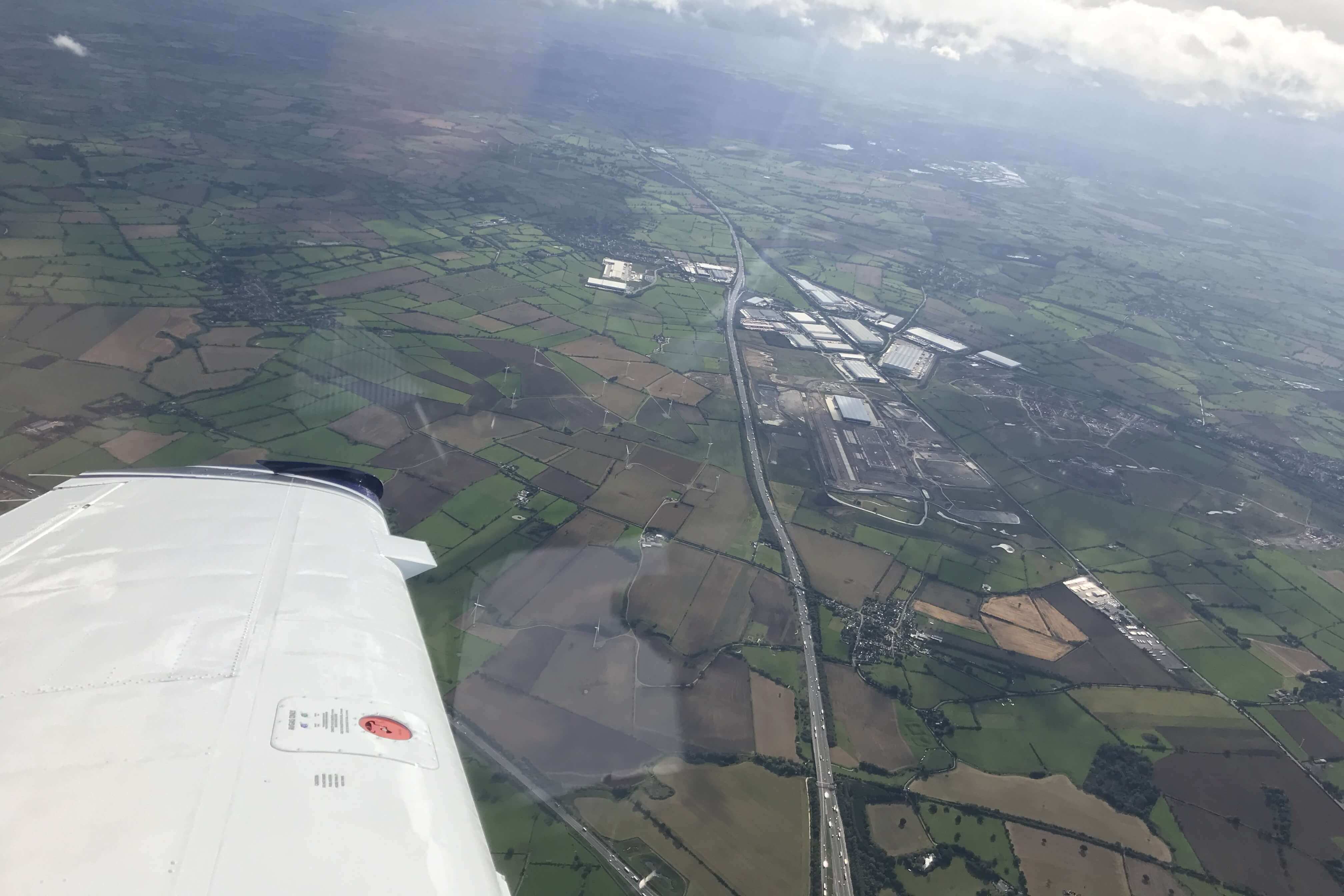Vintage aeroplanes have always had a special place in my logbook. From the time I first saw a Spitfire dance in the skies above Duxford, England, there has been something about the magic of classic machines that’s captured my imagination. So, I was delighted to be invited to experience a type that recently celebrated its 75th birthday: the venerable Beechcraft Bonanza.
It is the longest-lived of any US-made aircraft, having taken its maiden flight in 1945 and has been in continuous production ever since. To date, more than 18,000 have been delivered to customers around the world.
The original Bonanza emerged after World War II when aircraft manufacturers were looking to tap into the adventurous spirit of soldiers, sailors and airmen coming back to the United States from fighting overseas, as well as the civilian flyers deprived of their wings during the conflict. Period adverts supporting the launch of the aircraft refer to the tremendous savings in man hours, manpower and money for companies that chose to purchase the Bonanza, the first ‘thoroughly economical plane for business’.
I initially imagined a retro cockpit, very few mod-cons and perhaps some fabric-covered wings thrown into the bargain. But while the Bonanza is a design almost eight decades old, the modern incarnation of this machine is the epitome of cutting-edge private aviation.
From the outset, the aircraft was designed with the pilot in mind. While the basic all-metal Bonanza airframe looks the same today as it did in the 1940s, it has come a long way from the initial variant in terms of avionics, handling, comfort and range. Typical 21st century customers still tend to be entrepreneurs and executives, high net-worth individuals and those pilots who have stepped up from the standard single engine piston (SEP) training fleet such as the Cessna 172 Skyhawk via aircraft with increasing levels of performance and speed as well as more range and payload.
Like its stablemate the Beech Baron, the six-seat Bonanza features retractable landing gear as well as serious speed and engine power – our G36 test model boasted a Continental IO-550-B engine, kicking out 300 horsepower via a three-bladed aluminum Hartzell constant speed, variable pitch propeller. Most pilots won’t train in a Bonanza; it would be quite pricey and is too much of a plane for low hours aviators. But with the right experience it is a joy to fly and akin to a personal airliner. It is very comfortable and similar inside to a luxury car.
Let’s take a walk around
Cranfield Airport north of London was the venue for this test. Our Bonanza (registration N127BZ) sat proudly on the ramp outside the hangar just begging to go flying. It’s one of those aircraft that looks like it’s ready to take off even before you fire up the engine. The smart blue and grey stripes on the pristine white fuselage give the impression of speed – once airborne the Bonanza happily cruises at 176 knots (203mph) with the fear and flap raised, which far outstrips most general aviation puddle jumpers. Crucially, it also has a range of more than 800 miles, giving the Bonanza the ability to go pretty much anywhere in Europe from the United Kingdom.
One of the most impressive features from the outside is the giant double door to the passenger cabin. I don’t know of another SEP aircraft which has this, making for easy access to the interior. The seats can also be easily removed to enable a huge amount of cargo to be carried. Allied with the robust landing gear – which allows for landing on semi-prepared surfaces – and the Bonanza could justifiably be considered a rugged utility aircraft.
Climbing aboard and settling into the comfortable leather left-hand seat, though, it’s clear this is less of a pick-up truck and more akin to a luxury cruiser. The pilot’s instrument panel is uncluttered. As you’d expect for such a high-end aircraft, the avionics are the latest Garmin G1000 NXi with a 10-inch primary multi-function display, animated weather and a host of useful features such as the ability to restore your preloaded flight plan after a power failure. In addition, visual approaches are coupled to the autopilot and it has ADS-B in and out for enhanced traffic awareness and live weather updates. A cluster of stand-by instruments sits away to the right.
The audio panel also has some nice touches. It’s Bluetooth enabled so you can stream music to passengers from your smartphone. It has a nifty 3D audio function (so that sounds come into your headset from the direction in which they’re being emitted) and a recorder which will play back up to 60 seconds of radio transmissions – very useful if air traffic passes you a complex clearance and you want to double check what was said.
Firing up the aircraft it’s clear just how potent a powerplant the Continental is. The aircraft begins gently rocking on its undercarriage like a racehorse raring to go. Once lined up on Cranfield’s runway, it seemed I’d barely opened up the throttle and the machine was itching to lift off. We were soon soaring away on our departure heading. It certainly climbs well, at an impressive 1,230 feet per minute, and you can be airborne in just 920 feet of runway, making smaller airports with shorter surfaces accessible.
Once established in the cruise, the Bonanza has an autopilot with features that would be familiar to drivers of modern, high-end cars. Protective functions discourage the pilot from busting established attitude and airspeed parameters such as pitch, roll or speed minimums for various phases of flight. The aircraft won’t completely take control, but it certainly makes you aware and ‘nudges’ you so you’re fully conscious of what’s happening and can take corrective action if required. I tried overbanking in a left turn and the aircraft kept nudging the wings back towards level. Allow the speed to decay so you approach the stall, and the aircraft will let you know. Together, this helps the pilot feel that they’re flying a stable machine which will look after them, boosting confidence in all attitudes. It undoubtedly makes flying safer and reduces workload.
Handling characteristics are very precise, as I discovered while flying the aircraft back into Cranfield without using the autopilot, making a visual approach at the end of the sortie. Aileron and rudder are interconnected, helping you to keep your turns properly coordinated and in balance. As a novice on type, I’ll put my silky-smooth landing down to the ability of that chunky undercarriage to absorb any impact! After nearly an hour aloft putting this impressive machine through its paces it felt good to be contemplating a successful demo as we coasted to a stop outside the hangar and shut down.
With this current version of the Bonanza, the legacy of company founder Walter Beech remains in good shape some 70 years after his death. The aircraft is a delight to fly, has serious utility to take you places in comfort and style and I’m certain will continue to impress all those lucky enough to fly her for many years to come. For a decently kitted out new G36 you should expect to pay between $900,000 and $1m depending on optional extras such as satellite communications and Garmin synthetic vision.





